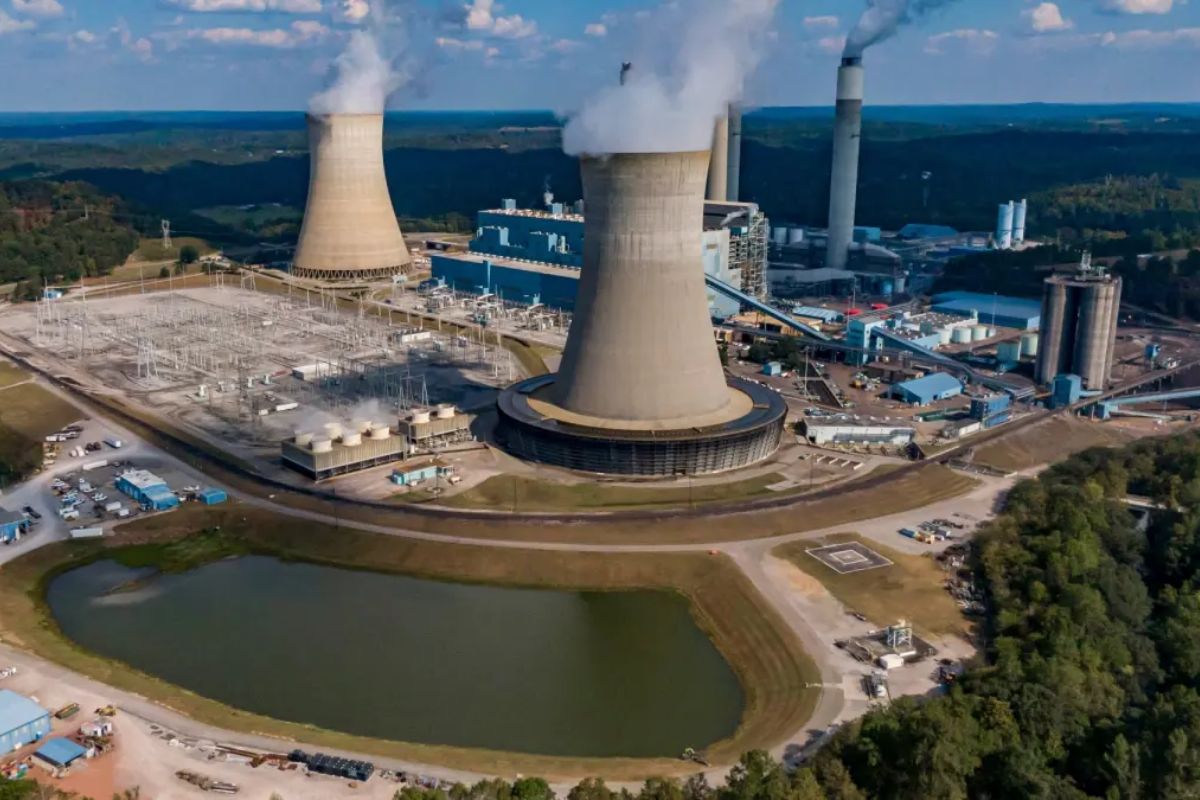Alabama Power Media Influence: In an era where media influence and transparency are increasingly scrutinized, the role of Alabama Power in shaping news coverage has come under the spotlight. The intricate web of newsroom financing and its potential impact on the information landscape.
Through a comprehensive investigation, we explore the limited coverage on coal ash concerns, transparency issues with the Alabama News Center, and the implications for civic engagement and the Black community.
Join us as we examine the complexities of Alabama Power’s media influence.
Key Takeaways
– Alabama Power’s influence on local media outlets raises concerns about journalistic independence and transparency.
– Limited coverage on coal ash concerns by Birmingham and Alabama News Center hinders public awareness and effective addressing of the issue.
– Lack of transparency in newsroom financing by Alabama News Center undermines credibility and impartiality.
– Alabama Power’s media influence affects civic engagement in the Black community, shaping public discourse and limiting opportunities for raising awareness.
Alabama Power’s Media Influence Under Scrutiny
Alabama Power’s media influence is currently being scrutinized due to allegations of shaping narratives through newsroom financing. A recent investigation by Floodlight has revealed the extent of the utility’s control over local media outlets, raising concerns about journalistic independence and transparency. Specifically, Alabama Power is implicated in influencing the narratives presented in the Birmingham Times and the Alabama News Center.
The utility’s significant role in the state’s economic and political landscape makes this issue even more critical. While the exact nature of the newsroom financing arrangements remains unclear, there are growing suspicions that Alabama Power’s financial contributions come with strings attached, potentially compromising the impartiality of reporting.
This scrutiny calls into question the integrity of the local media and raises concerns about the broader implications for public information and accountability.


Limited Coverage on Coal Ash Concerns
The limited coverage on coal ash concerns in Uniontown, Alabama, continues to highlight the potential influence of Alabama Power’s newsroom financing on local media outlets. Despite the undeniable health problems and environmental impacts associated with coal ash exposure, the Birmingham Times and Alabama News Center, both financially tied to Alabama Power, have consistently failed to provide comprehensive coverage on the issue. This concerning trend raises questions about the impartiality and journalistic integrity of these news organizations.
By downplaying the gravity of the situation and neglecting to investigate the extent of the harm caused by coal ash, these media outlets perpetuate a narrative that shields Alabama Power from public scrutiny. The lack of attention given to the coal ash concerns in Uniontown is a disservice to the affected residents and undermines the principles of responsible journalism.
To fully grasp the consequences of limited coverage on coal ash concerns, consider the following:
1. Health risks ignored: By neglecting to report on the health problems associated with coal ash exposure, the media fails to inform the public about the potential dangers they face. This not only hampers individuals’ ability to make informed decisions about their well-being but also perpetuates a sense of powerlessness among the affected community.
2.Environmental impact downplayed: The limited coverage on the environmental impacts of coal ash allows Alabama Power to continue its operations without facing public pressure to adopt more sustainable practices. This lack of accountability contributes to the further degradation of the local environment and hampers efforts to protect the community from further harm.
3.Public awareness hindered: The media’s failure to adequately cover coal ash concerns in Uniontown inhibits the spread of crucial information to the wider public. This lack of awareness prevents concerned citizens and advocacy groups from mobilizing and pushing for the necessary changes that would address the issue effectively.


ALSO READ: Alabama Proposed Flag Legislation: Impact on LGBTQ Pride Symbols
Transparency Issues with Alabama News Center
Despite claims of promoting ‘good news,’ the lack of transparency in Alabama News Center’s newsroom financing raises concerns about its credibility and impartiality.
Launched in 2015, the Alabama News Center operates as a state news wire with a focus on the electric industry, specifically Alabama Power. However, the investigation reveals a troubling lack of disclosure regarding Alabama Power’s ownership of the stories distributed by the news center to legitimate news sites.
This lack of transparency raises questions about journalistic ethics and impartial reporting. It is essential for news organizations to be transparent about their funding sources to maintain credibility and ensure that their reporting is not influenced by outside interests.
The lack of transparency in Alabama News Center’s newsroom financing undermines the integrity of the news it produces and casts doubt on the reliability and impartiality of the information it disseminates.
Civic Engagement and Black Community Impact
1. A significant impact on the Black community’s civic engagement can be observed due to Alabama Power’s media influence through newsroom financing. The utility’s connection to the Foundation for Progress in Journalism, which acquired the Birmingham Times, raises concerns about the potential bias in reporting and its effect on the narrative presented to the Black community. This influence can have far-reaching consequences for civic engagement and community empowerment.
2. The following three key points shed light on the impact of Alabama Power’s media influence on the Black community’s civic engagement:
a. Limited access to unbiased news: Newsroom financing by Alabama Power raises questions about the objectivity of news reporting, potentially limiting access to accurate and unbiased information for the Black community. This can hinder informed decision-making and active involvement in civic affairs.
b. Shaping public discourse: Alabama Power’s influence over news outlets can shape public discourse by controlling the narrative presented to the Black community. This may result in a skewed perception of issues and policies, affecting community engagement and advocacy.
c. Undermining community empowerment: By controlling the media narrative, Alabama Power’s newsroom financing can undermine community empowerment efforts within the Black community. It may limit opportunities for community organizations to raise awareness about important issues, mobilize support, and effect positive change.


Diminished Investigative Journalism Landscape
Investigative journalism in Alabama has suffered significant decline due to the influence of Alabama Power’s media financing. The utility’s involvement in newsroom financing, coupled with layoffs in traditional newsrooms, has created a challenging environment for investigative reporting.
Reporters have revealed that Alabama Power’s advertising purchasing power and aggressive stance towards critical stories have shaped news coverage, leading to the suppression of negative news and avoidance of in-depth scrutiny. This has resulted in a diminished investigative journalism landscape, where crucial issues such as environmental and energy journalism receive limited coverage.
With only a few reporters dedicated to covering these areas, the need for transparency, ethical journalism, and the preservation of an independent press becomes even more crucial. The impact of Alabama Power’s media influence on investigative journalism raises concerns about the state of accountability and the public’s access to unbiased information.
Conclusion Of Alabama Power Media Influence
Alabama Power’s media influence through newsroom financing raises concerns about:
– The limited coverage of important issues such as coal ash concerns and transparency issues with Alabama News Center.
– The impact on civic engagement and the Black community.
– Contributing to a diminished investigative journalism landscape.
The need for unbiased and independent reporting is crucial in order to ensure:
– Transparency.
– Accountability.
– The dissemination of accurate information to the public.
Our Reader’s Queries
Where does Alabama Power get its power from?
Our hydroelectric generating facilities have formed multiple lakes along the Tallapoosa, Coosa, and Black Warrior rivers. These plants contribute to supplying our customers with dependable and environmentally friendly electric energy.
Who supplies power to Alabama?
On a global scale, coal, succeeded by gas, stands as the primary source of electricity production. Among low-carbon alternatives, hydropower and nuclear play significant roles, while wind and solar exhibit rapid growth. Examining specific countries’ electricity mixes reveals notable changes over time.
How big is Alabama Power?
Alabama Power’s Generation organization covers its service area, overseeing almost 80 electric generating units and 26 facilities. These assets boast a combined peak capacity exceeding 14 million kilowatts, serving the energy needs of the company’s 1.5 million customers.

